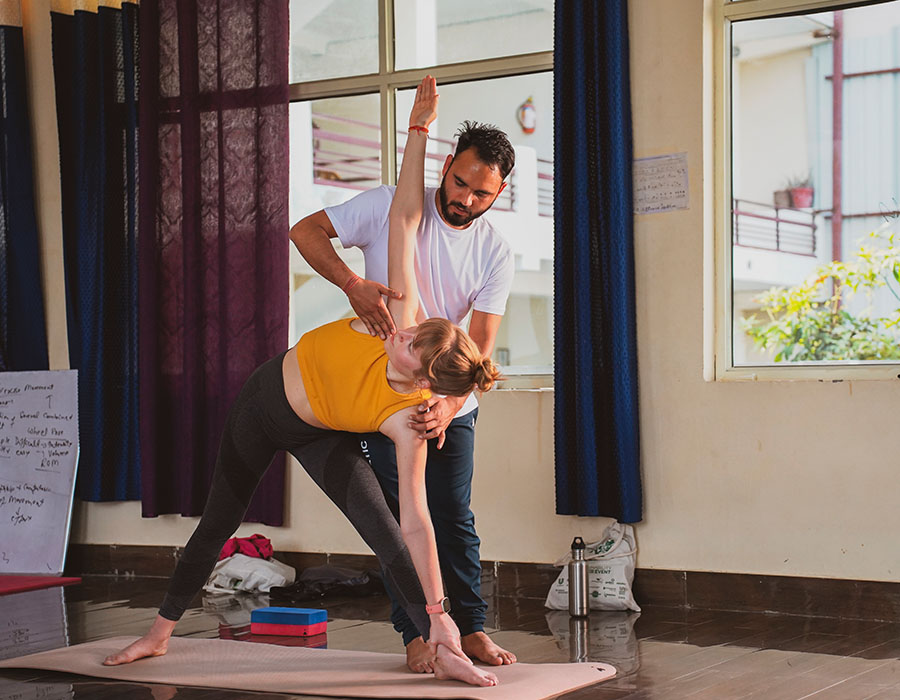Yoga is more than a physical exercise; it’s a transformative practice that harmonizes body, mind, and spirit. For those inspired to deepen their practice and share this ancient discipline with others, a Yoga Teacher Training (YTT) program is an excellent path. These programs provide an immersive experience, offering theoretical and practical knowledge about yoga, its philosophy, and teaching methodologies. This guide provides an overview of YTT programs and certifications, highlighting what aspiring yoga teachers need to know.
Understanding Yoga Teacher Training Programs
Yoga Teacher Training programs are designed to equip individuals with the skills and knowledge to teach yoga professionally. These programs vary widely in duration, style, and depth, catering to diverse student goals and levels of commitment. While some participants aim to become certified instructors, others join to deepen their practice.
Core Elements of YTT Programs
Asana Practice (Postures): Students learn and refine their physical practice, focusing on alignment, adjustments, and modifications for various body types.
Pranayama (Breathwork): Breath control techniques are taught to enhance energy flow and mental clarity.
Meditation and Mindfulness: Techniques to calm the mind and cultivate awareness are integral to training.
Yoga Philosophy and History: Understanding the roots of yoga, including ancient texts like the Yoga Sutras and Bhagavad Gita, is foundational.
Anatomy and Physiology: Students study human anatomy to understand how yoga affects the body and to teach safely.
Teaching Methodology: Aspiring teachers learn how to sequence classes, create inclusive environments, and communicate effectively.
Practicum: Hands-on teaching experience is an essential component, allowing trainees to gain confidence.
Levels of Yoga Teacher Training
Yoga Teacher Training is typically categorized into three levels based on the depth of study and teaching experience:
1. 200-Hour Yoga Teacher Training (RYT-200)
The 200-hour training is the foundational course and the most popular entry point for aspiring yoga teachers. It provides a comprehensive overview of yoga’s fundamental aspects, equipping participants with the skills to teach beginner to intermediate-level classes.
2. 300-Hour Yoga Teacher Training (RYT-300)
Building on the foundational course, the 300-hour program delves deeper into advanced asanas, therapeutic applications, and specialized teaching methodologies. Graduates of this level are prepared to handle more diverse student needs and complex class formats.
3. 500-Hour Yoga Teacher Training (RYT-500)
Combining the 200-hour and 300-hour programs, this intensive training is for those committed to mastering Yoga Teacher Training. Graduates of the 500-hour course are often seen as experts and may specialize in niche areas like prenatal yoga, yoga therapy, or advanced meditation practices.
Accreditation and Certification
Certification provides credibility and allows graduates to teach professionally worldwide.
Yoga Alliance
The Yoga Alliance is the most recognized certifying body for yoga teacher training programs globally. Programs registered with the Yoga Alliance adhere to its standards, ensuring high-quality education.
International Association of Yoga Therapists (IAYT)
For those interested in yoga therapy, the IAYT provides accreditation and certification for specialized programs. This certification focuses on the therapeutic application of yoga for individuals with specific health conditions.
Other Certifying Bodies
In addition to the Yoga Alliance, other organizations like the British Wheel of Yoga (BWY) and the International Yoga Federation (IYF) offer credible certifications, especially in specific regions.
Styles of Yoga in Teacher Training
YTT programs cater to a variety of yoga styles, each with its unique philosophy and approach. Common styles include:
Hatha Yoga: The foundational style focusing on balance, flexibility, and strength.
Vinyasa Yoga: Known for its dynamic flow and breath-synchronized movements.
Ashtanga Yoga: A rigorous and structured style involving six progressive series of postures.
Kundalini Yoga: Focuses on energy flow, breathwork, and meditation.
Choosing a style depends on personal interest, teaching goals, and the needs of prospective students.
Specialized Yoga Teacher Training
As yoga evolves, specialized training programs have emerged to cater to specific populations and needs. Some popular specializations include:
Prenatal and Postnatal Yoga: Designed for pregnant women and new mothers.
Children’s Yoga: Focused on teaching yoga to young learners in an engaging and age-appropriate manner.
Yoga for Seniors: Adapts traditional practices to suit older adults.
Yoga Therapy: Combines yoga with medical science to address physical and mental health issues.
Corporate Yoga: Tailored for workplace wellness programs.
How to Choose the Right YTT Program
Selecting the right YTT program is a personal decision influenced by goals, lifestyle, and preferences. Here are key factors to consider:
Accreditation: Ensure the program is certified by a recognized body like the Yoga Alliance.
Curriculum: Review the syllabus to confirm it aligns with your interests and goals.
Instructors: Research the experience and credentials of the teaching staff.
Location: Decide whether you prefer a local program or a destination retreat.
Duration and Format: Options range from intensive courses to part-time weekend schedules.
Cost: Factor in tuition fees, accommodation, and other expenses.
The Journey Ahead
Completing a Yoga Teacher Training program is a transformative journey that goes beyond teaching skills. Certified instructors can teach in studios, gyms,and schools, or even start their yoga businesses. The path is diverse, offering opportunities to share the gift of yoga with others while continuing to grow personally and professionally.
